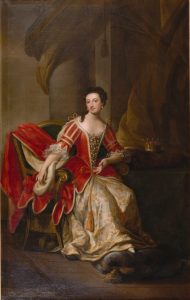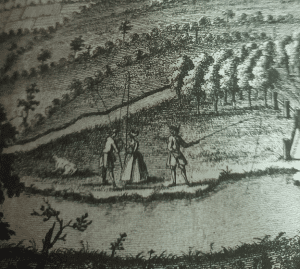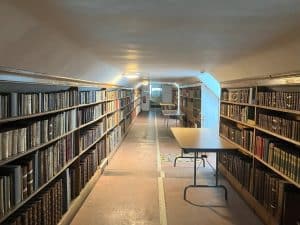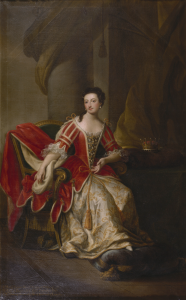A Tribute to Sam Mortlock [1924 to 2021] from the Holkham Library
November 19, 2021 | Treasure tales and archive snippets | 8 minute read
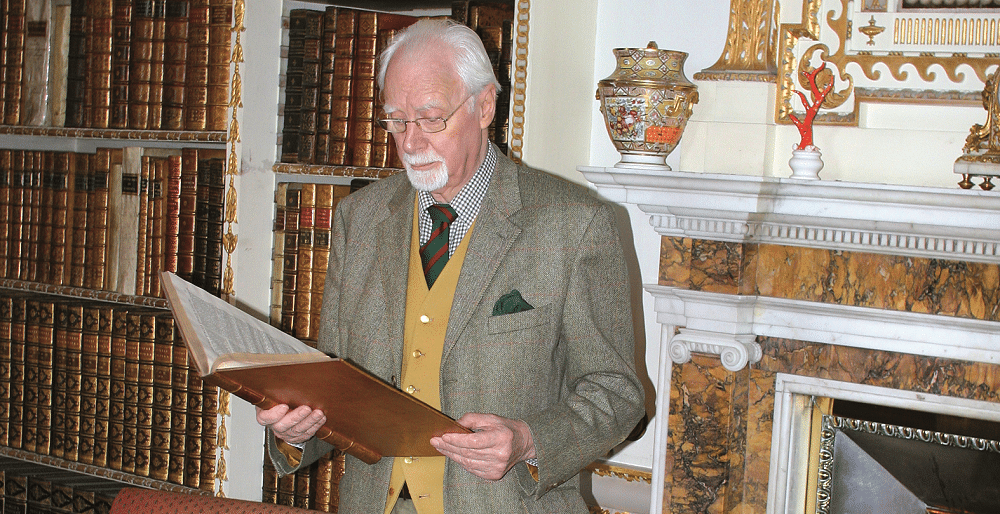
In the day to day work we do in the Library at Holkham, one name crops up more than any other: Sam Mortlock. Sam’s presence can be felt in every corner of the library and in our telling of the Holkham story.
When I heard that Sam had passed away, last week, my first reaction was a keen desire to acknowledge his contribution with a short tribute from my point of view as the current librarian. I never had the honour to work with Sam. Suzanne Reynolds held the reigns when I first started. Yet I felt his presence in everything I did as I learned the ropes as Holkham librarian.
I first heard of Sam before I started at Holkham, just over a decade ago now, through his fabulous work on Norfolk Churches . This is our bible as we cycle around North Norfolk, stopping off for a picnic and a nose around at some obscure but stunning church or other.
My first task as librarian was to master Sam’s library database. At first, I took it for granted. It was only later that it dawned on me what a monumental task it had been. As I delved into the manual Sam had written, it dawned on me that this was something he had created from scratch. He dictated the structure, the fields, the subject headings – the lot.
He then proceeded to catalogue all ten and a half thousand titles in the printed library. Yes, he drew on previous catalogues and acknowledged them, but he physically entered every single record and detail of that record on to what must have been a state-of the-art database in the 1990s.
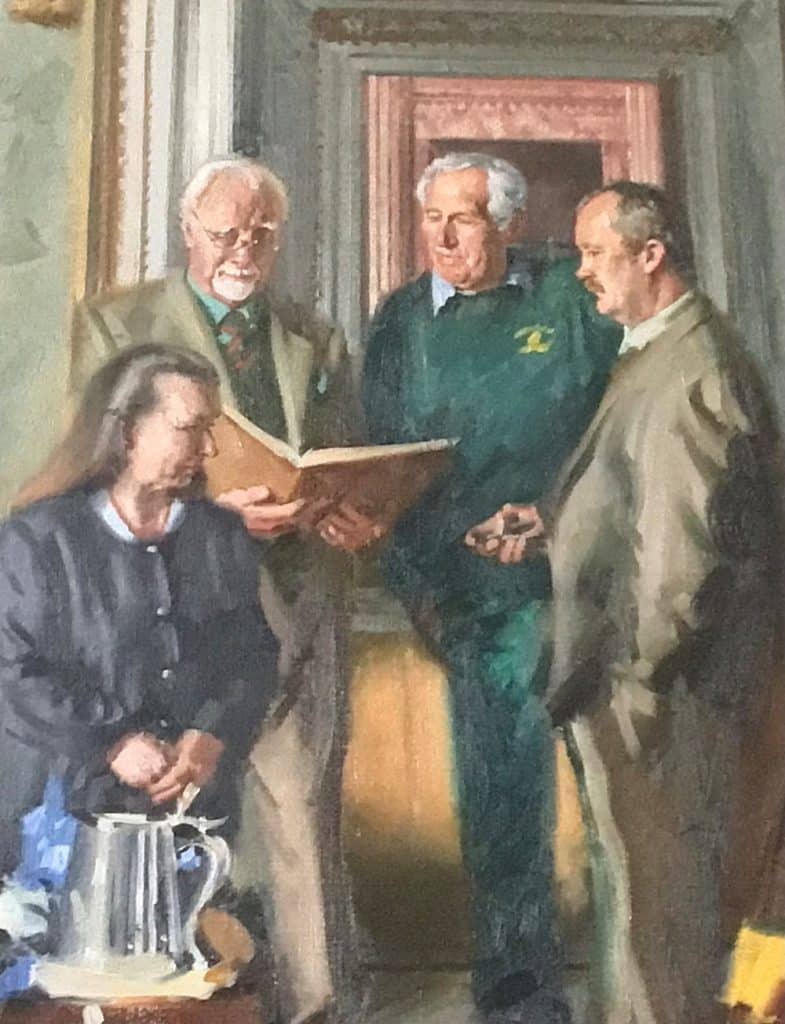
Sam Mortlock with (left) Ms Raven, housekeeper, (right) Mr Thompson, Houseman and Mr Shearer, Deputy Hall Administrator.
Today, thanks to some clever data cleaning by our Collections Co-ordinator, Katherine Hardwick, every single detail of Sam’s work has been transferred over to our new Qi collections database. We use this database as part of our ongoing conservation work, to provide shelf lists as well as condition notes from when Sam first catalogued the books. He was also careful to note any interesting features or marginalia.
Sam also removed, catalogued, and stored every scrap of paper which once graced the pages of each book. It took me a while to work out what the abbreviation FUG meant: It stands for fugitive items, these can range from pieces of paper to a pressed flower.
Sam then turned his attention, as did I, to the one hundred and thirteen volume collection known as the Cosmographia. Purchased in the 1750s by Thomas Coke, 1st Earl of Leicester, to grace his newly completed South Tribune, the Cosmographia is a snapshot of the world in the late 17th and early 18th century, created by a bookseller called John Innys. It is a huge scrap book of maps, plans, elevations of cities, and illustrations of key buildings arranged country by country. It starts with the heavens and then circumnavigates the known globe, taking in Europe – with multiple volumes for countries like France, Britain, and Italy – Asia, North America, and South America. As you would expect for a work produced in the mid-18th Century, there are some geographical quirks – California is still considered to be an island, and Australia hadn’t even been discovered!
A letter from Sam at the outset of this new cataloguing journey to his ‘mentor’, Ralph Hyde, Keeper of Prints and Maps at the Corporation of London, tells of his trepidation:
Having sweated blood over the years in dealing with the 10,000 [more!] printed books. It is a mite discouraging to be told that I can expect greater trials ahead! … I cling to the hope that a brief handlist will prove worthwhile … I seriously question whether I ought to devote what is likely to be the rest of my active life to it.
But complete it he did, and it is so much more than a brief handlist. We shall be ever grateful for his tenacity coupled with his talent!
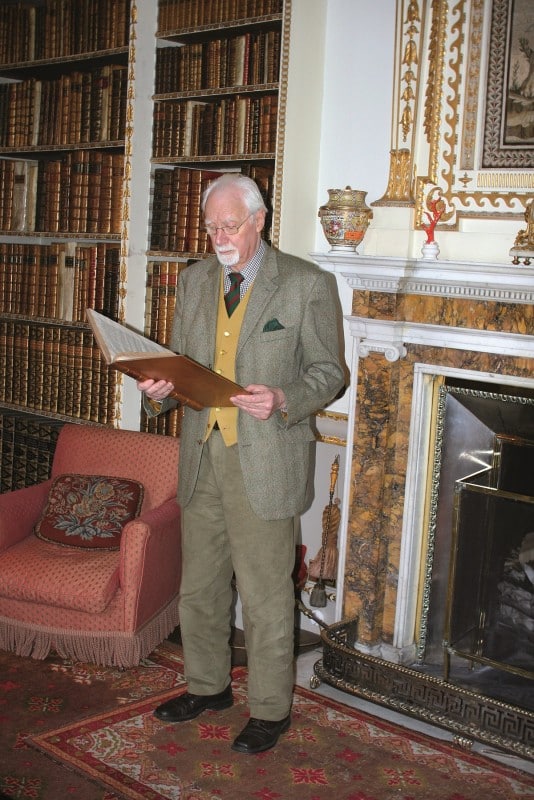
Sam Mortlock in the Long Library
I found a section in Sam’s detailed, handwritten ‘how to’ of the library computer systems which logs his progress as he catalogued the Cosmographia. Volume by volume he counts how many maps, how many plans and how many prints there are to be found. This is the cornerstone of our overall view of the collection. Through his cataloguing, we can now go further.
Sam’s data is now being transferred, item by item, onto our Qi database. Katherine has produced a detailed manual to facilitate this transfer and Sophie Lewis has just spent a six-month internship working on this and has transferred around 15% of the data, working one day a week. Along the way she has discovered many fascinating stories to be pursued and explored. More than one person’s working lifetime could be taken up in this new endeavour.
Happily, cataloguing the Cosmographia did not take up the rest of Sam’s working life, as he feared. When ‘Eddie’, the 7th Earl, sought a suitable subject for his prestigious Roxborough Club contribution, it was to Sam that he turned. The result was a definitive history of the Holkham Library, published in 2006. He followed this with a fantastic volume on Thomas Coke’s early married life, Aristocratic Splendour, which appeared in 2007. The library also contains an article on the original silver collection owned by Thomas Coke and a translation from the Italian of an article on Holkham Hall’s first ever librarian, Domenico Antonio Ferrari.
My personal favourite, and the volume I always turn to first when any question arises about Holkham, is Sam’s collection of notes and cuttings on every facet of Holkham life, (which must have taken all twenty years to accumulate). It is entitled Holkham Notes and Annals and it appeared in 2009 with an expanded edition in 2012. It also contains some very useful family trees. From Marcus Aurelius to Napoleon Bonaparte and from Boswell to the supernatural, if it relates to Holkham, Sam has an entry for it.
My favourite entry is indeed in the section on the supernatural. Sam records how he discovered that several large volumes in the attic corridor library had been neatly turned on their sides. Four years later, he records:
I had cause to go up to the top corridor and found that the batch of folios that had been placed on their sides were upright again (with no staff involvement).
I asked our houseman, Mark Taylor, known to all as Hooker, about this. He confirms that no member of staff would have dared play tricks on Sam, especially not when it concerned ‘his’ books!
This brings me neatly to my final reflection. When I first took over as librarian, Hooker pulled me to one side and showed me exactly how Sam had taught him safely to remove a book from its shelf:
the trick [said Hooker] is to push the book either side back ever so slightly to allow a proper grip. Never pull the book out from the top of its spine.
I think Sam would have been pleased his advice was still being preached. And when I hear our conservation volunteers asking ‘what does Sam’ say about a particular volume under scrutiny, I know that we are standing upon his shoulders and seeing further: he was a giant!
Sam Mortlock, Holkham related publications:
– Holkham Notes and Annals: Miscellaneous notes and memoranda concerning Holkham & the Coke family derived from a variety of sources, 2009 and 2012.
– Aristocratic Splendour: Money and the world of Thomas Coke, Earl of Leicester, 2007.
– Holkham Library, a History and Description, Roxburghe Club, 2006.
– Thomas Coke and the family silver, The Silver Society Journal, No. 9, Autumn, 1997, pp. 552-558.
As a translator:
– Domenico Antonio Ferrari, a Neapolitan bibliophile in England in the first half of the 18th Century, Valdo Vinay, (unofficial translation of BN. 10345), circa 1965.
Footnote:
D.P Mortlock and C.V. Roberts, The Guide to Norfolk Churches: Third revised and enlarged edition, 2017.
View all latest blog posts here.
